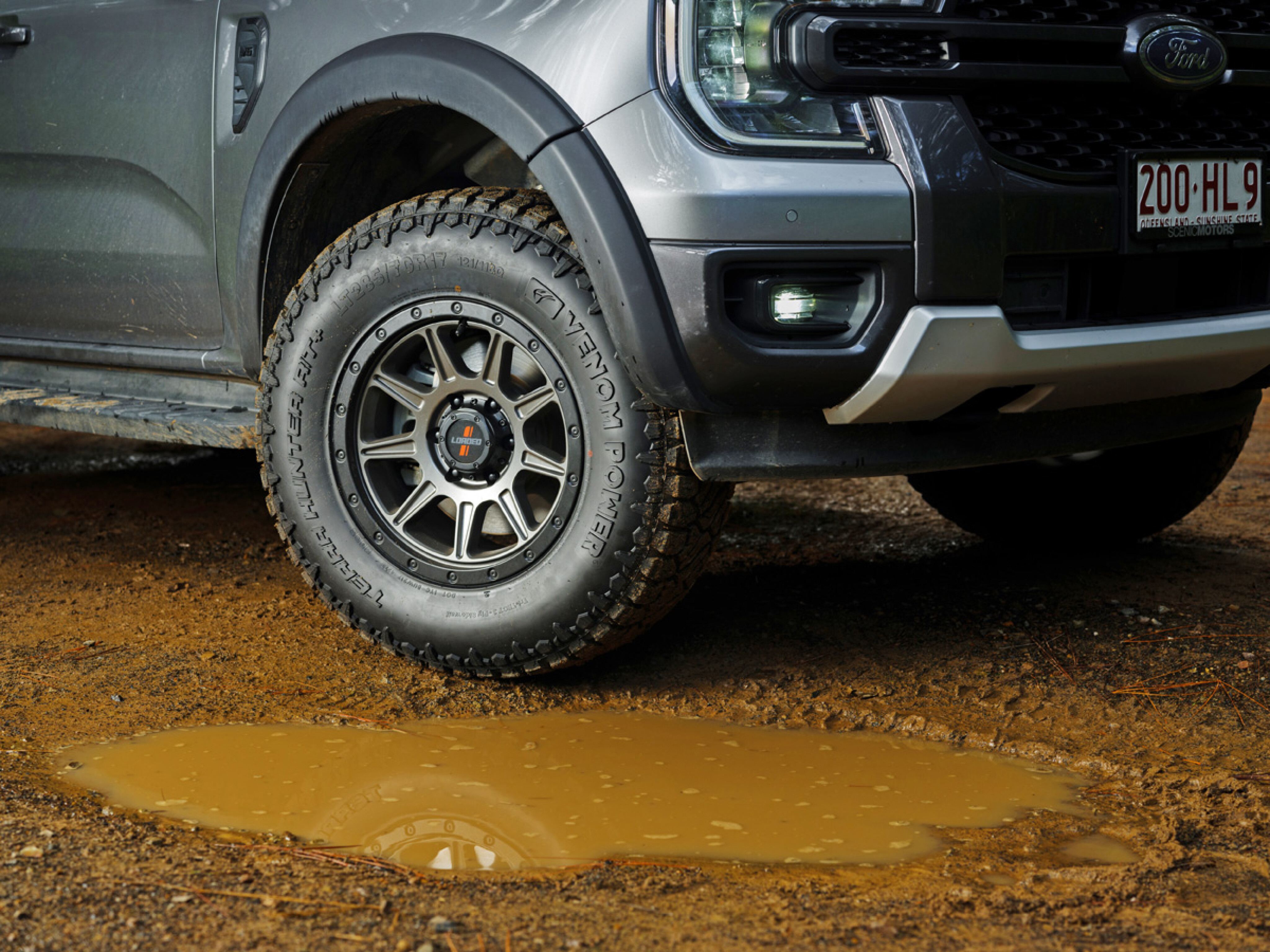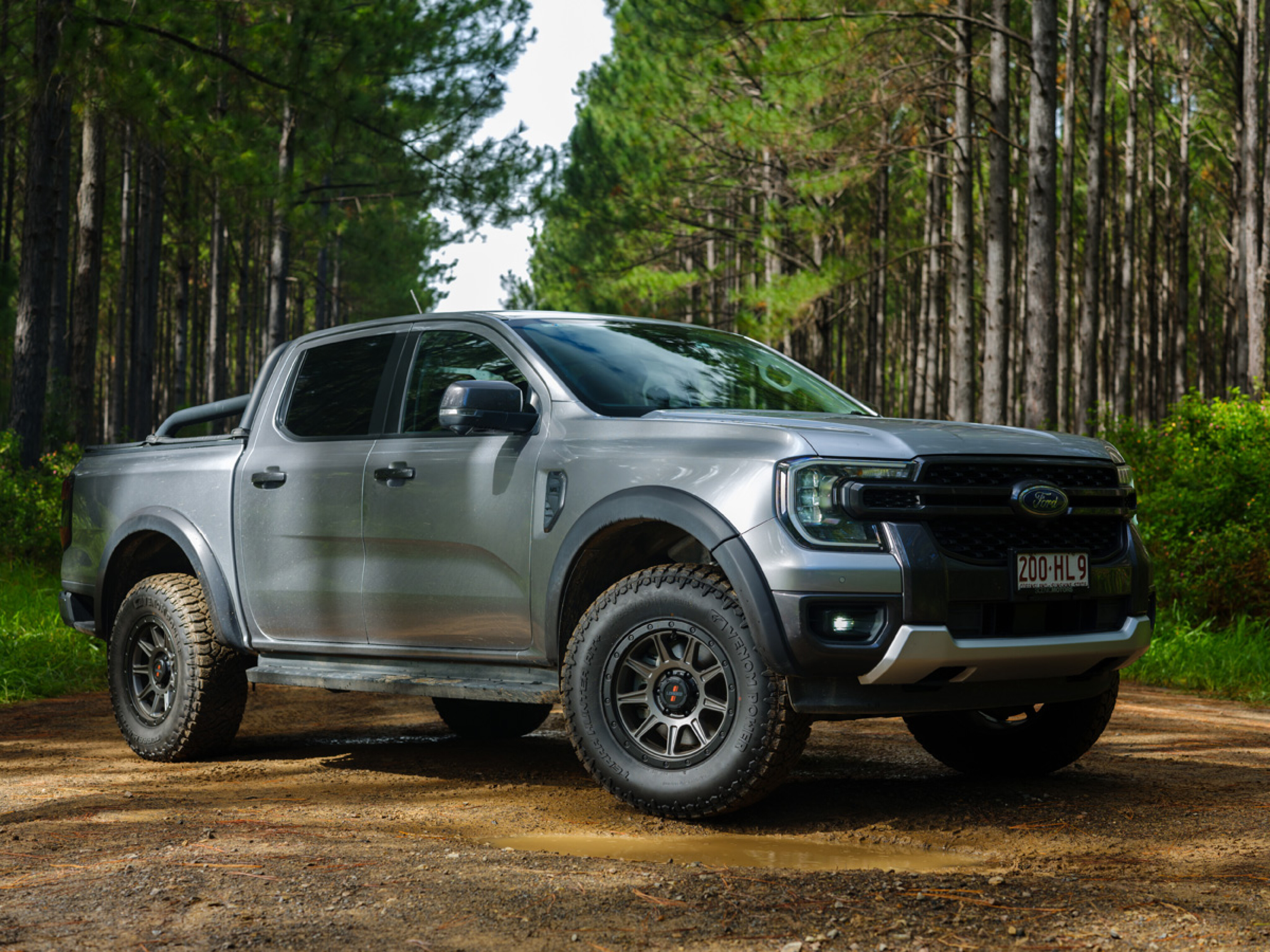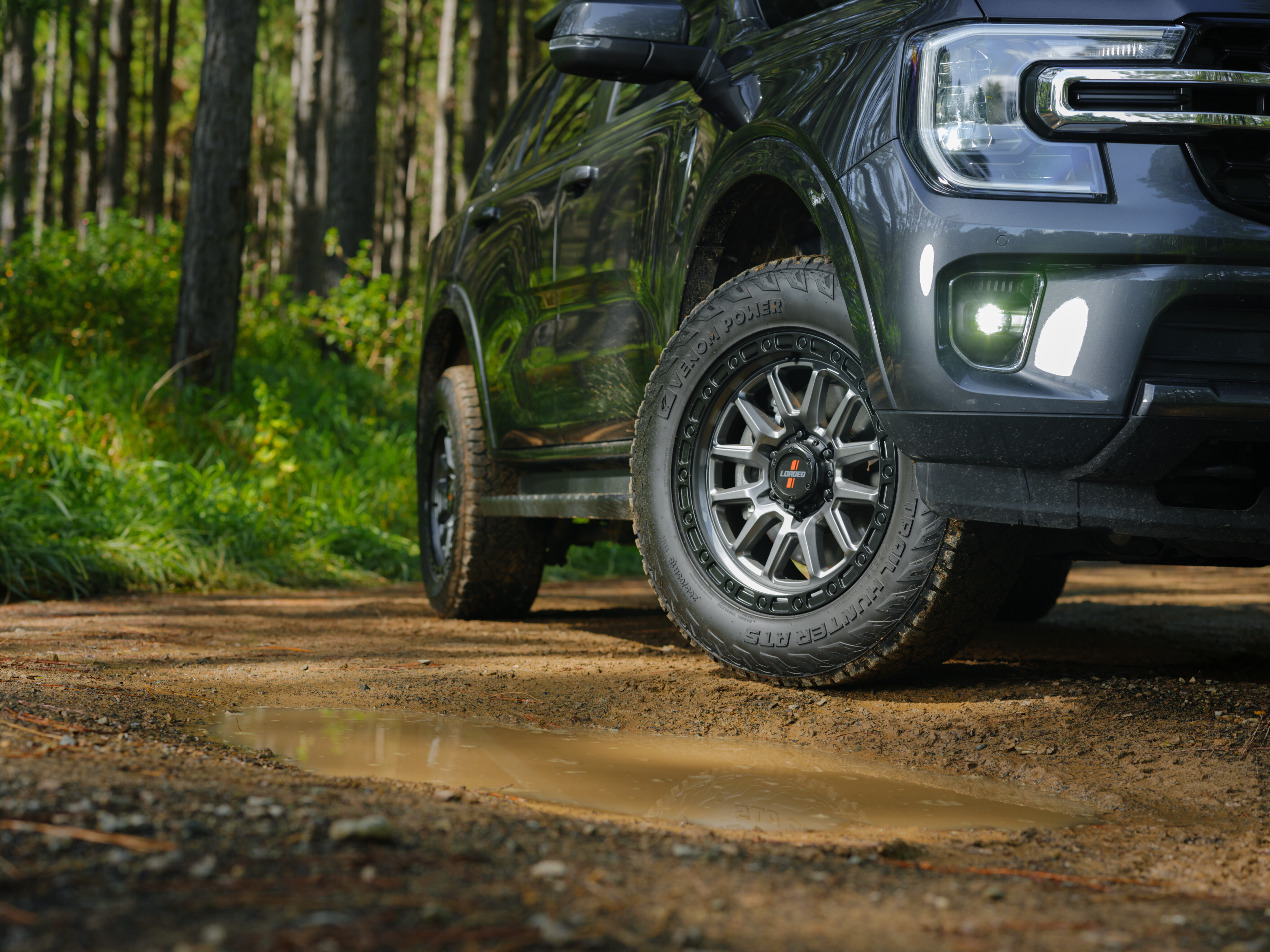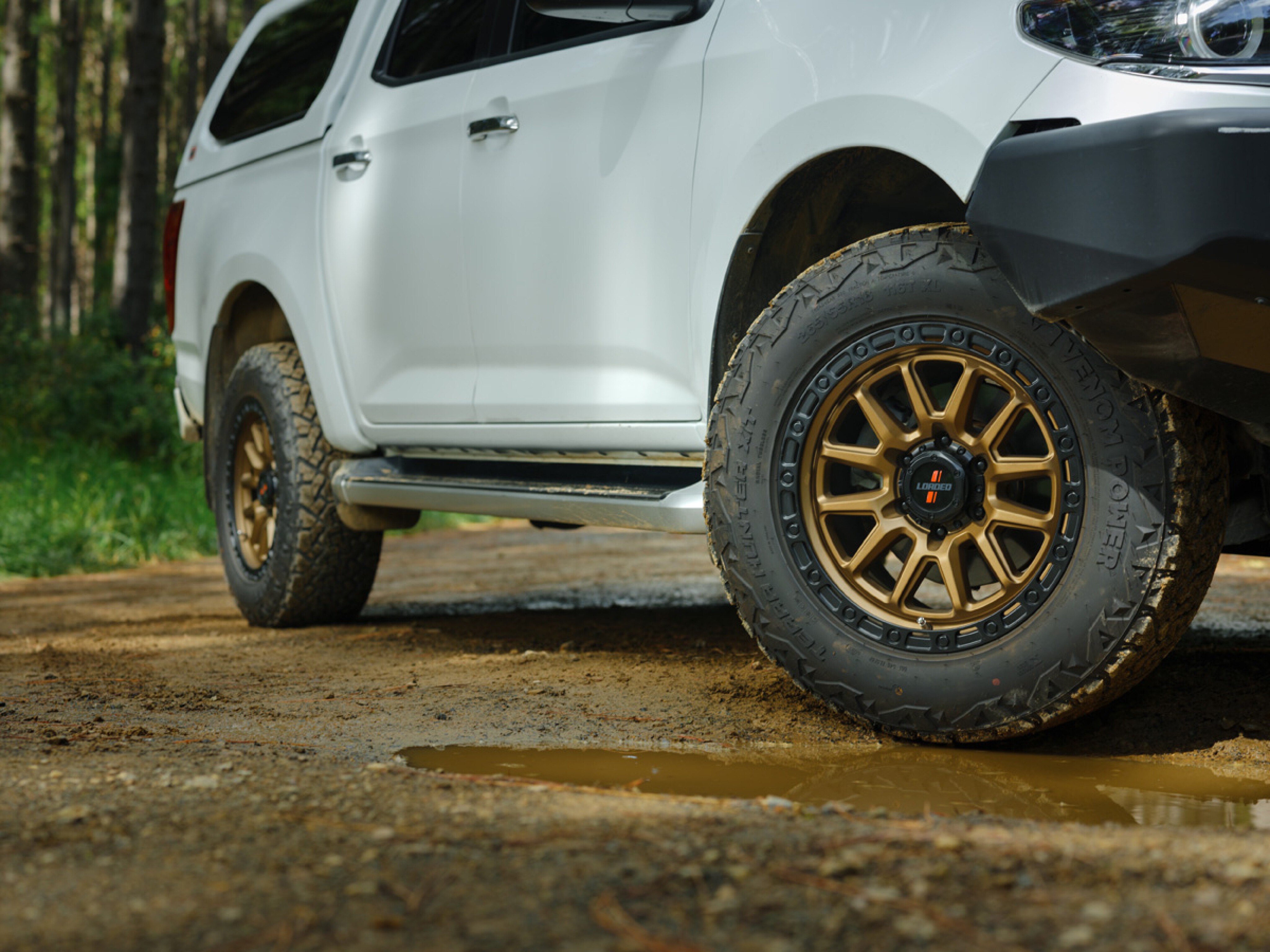
Modifying a four-wheel drive for off-road travel is inevitable for most owners with an appetite for adventure, but loading a 4x4 with gear – think bull bars, roof-top tents – or hitching a caravan or camper trailer behind it can vastly increase overall weight and lead to the vehicle being overloaded.
From the factory, a vehicle is stamped with a GVM (Gross Vehicle Mass) rating by the manufacturer, which indicates the maximum weight a vehicle can legally carry – this includes the vehicle itself, on-board passengers, all cargo, and any aftermarket accessories installed. GVM isn’t to be confused with GCM (Gross Combined Mass), which essentially is the combined weight of a vehicle and what it’s towing. For example, a Mitsubishi Triton GLX+ has a GVM of 3200kg and a GCM of 6250kg.

A GVM upgrade involves modifying a vehicle to increase its GVM rating, which means it can legally carry more weight than the factory GVM limit. It’s a big, multi-faceted process that typically involves upgrading the suspension with stronger springs and shocks; upgrading the brake system so that it can cope with the added weight; and reinforcing the chassis to support the increased weight.
However, often overlooked is the importance of wheel load-rating for vehicles carrying heavy loads and/or with GVM upgrades. There’s plenty of information on the web about tyre load ratings, but it’s important for four-wheel drivers to also know about wheel load ratings and the potential risks of overloading wheels. In fact, many OEM factory rims do not even have a load rating marked on the wheel. Alloy wheels fitted to vehicles that are overloaded can crack as a result of impact or the forces produced while driving over uneven surfaces.

LOADED is a new brand in Australia that was developed at the Brisbane headquarters of Neta Tires & Wheels, an Australian company with a 65-year history in Australia.
“Our customers were asking for a high load-rated/GVM alloy wheel brand,” said National Wheel Manager, Scott Knight. “Every LOADED wheel has a 1675kg load rating, giving it greater strength, shock resistance and making them ideal for vehicles carrying heavy loads and/or with GVM upgrades. LOADED offers you peace of mind.”
The specialised alloy wheels are manufactured using a “flow-form” process, which makes them lighter, stronger and more shock-resistant than conventional cast-alloy wheels. The “flow-form” process uses hydraulic rollers to elongate, compress and shape the wheel barrel, which in turn modifies the microstructure of the metal and increases its tensile strength for higher load capacity and greater shock-resistance. Other brands, on the other hand, achieve a higher load for a standard cast wheel by adding more material. This results in a heavier wheel that compromises performance by slowing acceleration and reducing fuel efficiency.

LOADED wheels have passed rigorous international testing standards for impact, bending fatigue and radial fatigue, and are backed by a lifetime structural warranty (conditions apply).
Touring Solutions Australia (TSA) specialises in GVM upgrades, and engineers at the Australian company recently approved and endorsed LOADED wheels for vehicles fitted with its GVM upgrade and lift kits.
“After careful consideration, Touring Solutions Australia (TSA) welcomed the opportunity to introduce LOADED wheels to its certified installer network,” said Todd Kranen, Sales and Business Development Manager at TSA. “LOADED Stockton and Gunbarrel wheels offer our network an attractive-looking wheel in a common PCD. Not to mention, LOADED have the testing and data to back its massive 1675kg load rating!”

Todd told us that when increasing the GVM of your vehicle, it is imperative to utilise a wheel – like the LOADED range – that is rated for the increased GVM load.
“Given the increased payload resultant from a GVM upgrade, the entire weight of the vehicle is carried by the wheels,” he said. “In the absence of wheels rated for the increased carrying capacity, there exists a tangible risk of vehicle damage or compromise in ensuring a safe journey home."

Recre8 Automotive Group also specialise in GVM and GCM upgrades across its Rambler Vehicle builds and ASG 4x4 dual-cab conversions, and the Brissy company has recently adopted LOADED wheels as a preferred option on its builds.
“When increasing the GVM and GCM of 4WDs, particularly when we chop them in half into dual-cabs, wheels are a significant consideration. We often see vehicles set up with heavy loads and towing large caravans or boats where the wheels simply aren’t rated sufficiently for the job,” cited Kris Humphrys, Managing Director for Recre8 Automotive Group. “The LOADED Stockton and Gunbarrel wheels with their 1675kg rating exceeds the axle load requirements of our largest GVMs, giving that extra peace of mind.
“Our customers range from primary industries through to the resource sector and recreational users. These vehicles are not only required to carry loads up to their GVM and GCM but also do it while traversing remote and rugged areas where road conditions can challenge the durability of even the toughest vehicle – for this reason partnering with a quality wheel manufacturer such as LOADED Wheels is high on our list of priorities,” he added.
LOADED wheels are available in a range of finishes and 17- and 18-inch fitments to fit most popular 4x4s, with a new LOADED Gibb wheel in five finishes to suit the Toyota LandCruiser 79 Series coming soon.
Determining an OEM wheel rating
TSA’s sales and business development manager, Todd Kranen, explained to 4X4 Australia that the standard method to determine the OEM wheel rating involves taking the maximum rear axle load capacity specified by the OEM and dividing it by two.
“This calculation is crucial because it provides a reliable estimate of the load each individual wheel is designed to support,” Todd advised. “Essentially, since the rear axle load is distributed across two wheels, dividing the total capacity by two gives us the per-wheel rating.”



COMMENTS